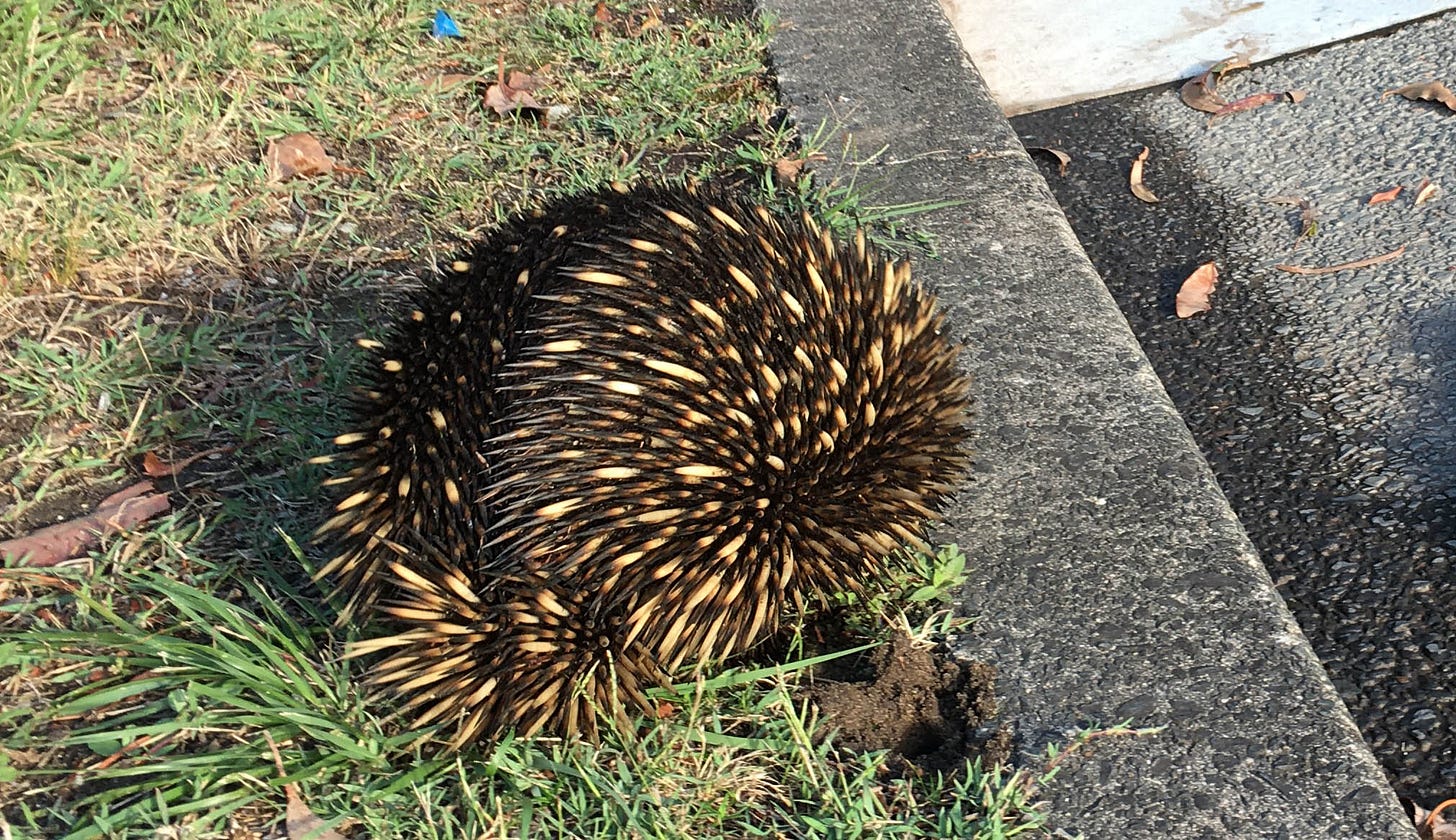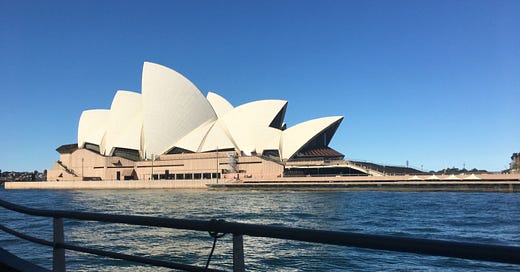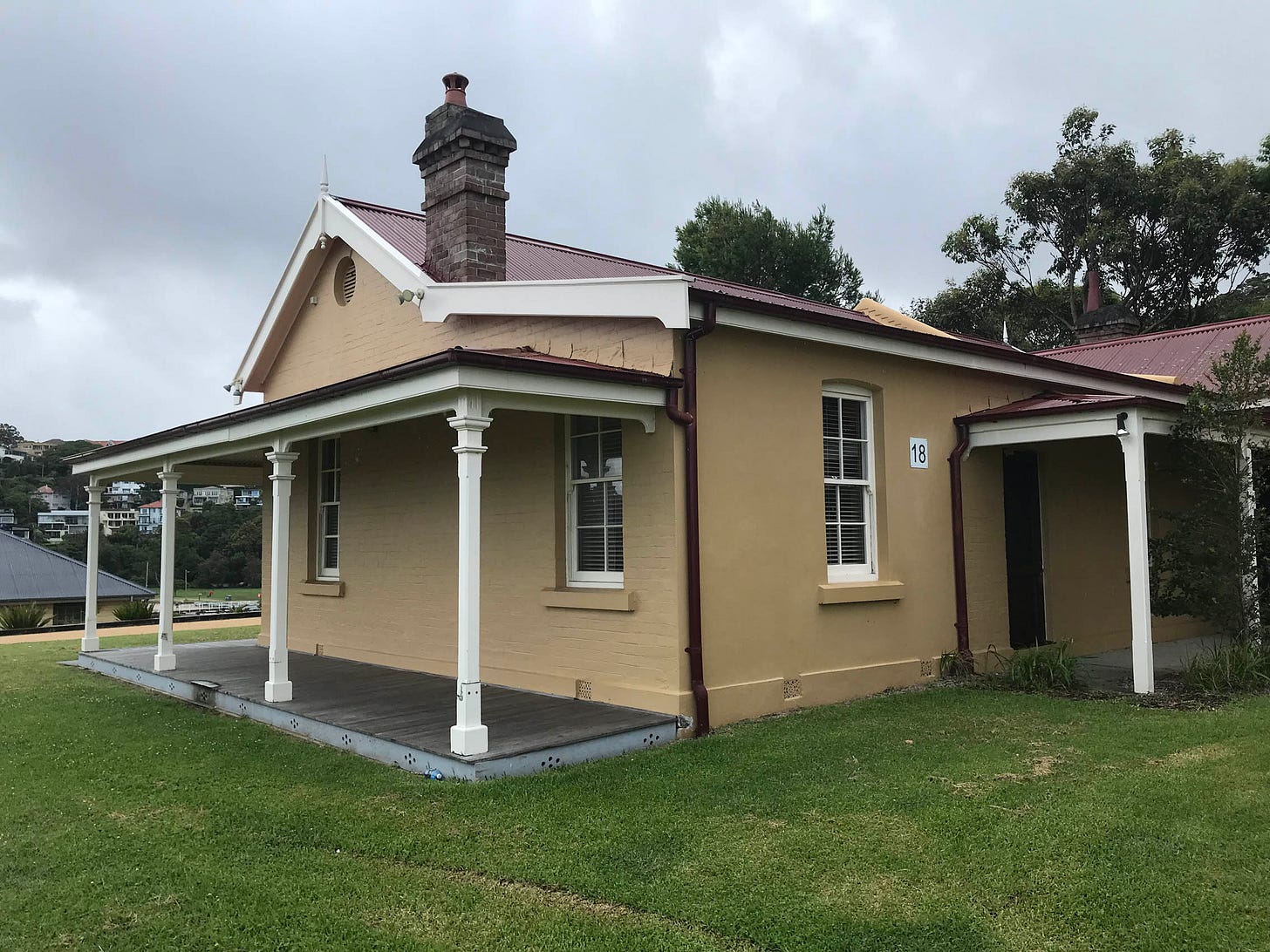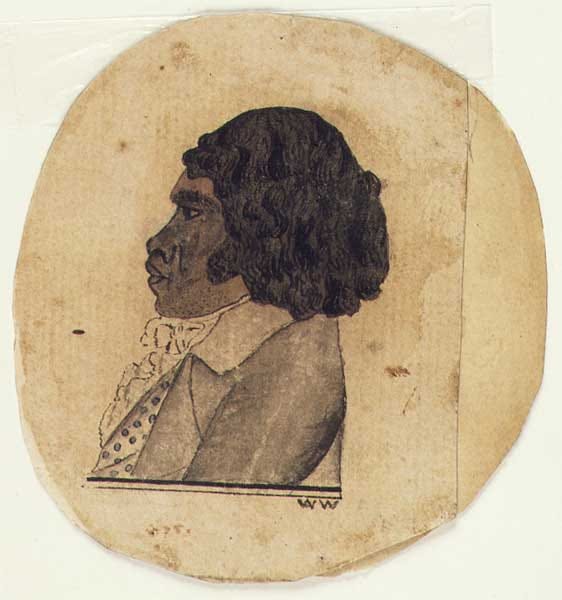Australia Day: the fun parts
Exploring Sydney's Chowder Bay and some excellent bits of Australiana
Australia Day is the public holiday we get on the anniversary of Captain Arthur Phillip planting the British flag at Sydney Cove, creating the first English settlement.
Aboriginal people had already been living here for about 60,000 years after walking in when sea levels were so low that Cape York was connected to Papua.

On 26 January, 1788, their futures tangled. It is the genesis of modern Australia, and so we celebrate.
It’s also a public holiday - so here is a lovely thing to do in Sydney on Australia Day.
Visit Chowder Bay
Named after the seafood soup that American whalers made there from the oysters and pipis growing on the rocks, Chowder Bay is a gem of nautical history folded under Sydney’s wealthy northern enclave of Mosman.
Interesting walks through secluded bushland lead to old forts or refreshments, beaches and a dash of 19th Century naval craziness.

In the 1890s, Australia needed to defend Sydney from potential sea attack, so the best minds of the day put a secret and cunning plan together at Chowder Bay just inside the northern entrance of the harbour.
Engineers from the Submarine Mining Corps used the mysteries of electricity to make explosive mines which they tied to underwater cables and strung across the water from one side of the harbour to the other.
If an enemy ship approached, look-outs on the foreshore could detonate them.
In 1922 the idea was abandoned but Chowder Bay still holds its relics including the workshops, jetty and cable pond.
There is also a modern navy jetty which you can’t go onto.
Restoration work by the Harbour Trust has revived the beautiful old buildings including former military hospital buildings and barracks.
The Submarine Mining Corps had the right idea, however, as on 31 May, 1942, the Japanese infiltrated Sydney Harbour in the dark with three mini-submarines and tried to attack allied cruisers HMAS Canberra and USS Chicago.
One of them managed to sink the requisitioned Sydney Harbour ferry Kuttabul at Garden Island killing 21 navy sailors.
Another was spotted at Taylors Bay between Bradleys Head and Chowder Bay, with at least one Mosman resident taking pot-shots at it with his .22 rifle.
A memorial avenue of trees and plaques for navy ships and submarines lost at war can be seen along the Bradleys Head to Chowder Bay walk.
The nautical theme runs all the way up Chowder Bay Rd and round the corner to naval training base HMAS Penguin, weirdly situated just past the nudist Obelisk Beach and opposite a posh historic house where you can have high tea.
The beach at Chowder Bay (not nudist) is a calm harbour enclave for swimming, snorkelling or diving.
Good coffee and lunch can be had in the cool open shade of Drift cafe, to punctuate any of the Chowder Bay scenic walks.
The Taronga Zoo to Chowder Bay trail meanders for 4.4km past Bradley’s Head amphitheatre where you can sit and watch the boats sail past the Opera House. It also boasts a 200-year-old rainforest at Taylors Gully and Aboriginal rock carvings.

Bungaree’s Walkway is a pretty trail that leads to the supposed farm of Bungaree, an Aboriginal elder known by early colonists as the Chief of the Broken Bay tribe. In 1815, Governor Lachlan Macquarie tried to get Bungaree to teach Aboriginal people to farm like Europeans. The venture failed, possibly because Aboriginal people had lived off the land longer than Europeans had been trying to farm it.
The Chowder Bay to Balmoral walk goes past George’s Head lookout to Balmoral Beach and you can also walk to the 1801 “Old Fort” also known as Middle Head Fort.
To get there:
Catch the F2 ferry from Circular Quay to Taronga Zoo then take the 4km bush walk .
Or, if walking is out, take the F6 Ferry from Circular Quay to South Mosman Wharf and catch the 111 bus all the way to Chowder Bay.
Look up ferry and bus times on Trip Planner.
Other wonderful random Australiana
Walkabout: the lynchpin film that captured Australia
A little-known fact is that Walkabout made by director Nicholas Roeg in 1971 is one of Australia’s greatest ever films. It was also the first film for a young David Gulpilil - expressive, explosively charismatic, Gulpilil became one of the Australia’s finest actors. Sadly he died last November.
The plot is simple: a middle-aged man takes his children from Sydney to the outback for a picnic then madly begins shooting at them. They run into the bush where they find an Aboriginal youth who helps them survive.
But it’s really a story about us and who we were up to that point in history, which it tells without preaching.
Some genius has put ‘80s classic Aussie rock hit “Solid Rock” by Goanna to a backdrop of scenes from the film (above) and its a winning combo.

Our Sunshine - Ned Kelly
Australia’s most enduring singer-songwriter Paul Kelly teamed up with Melbourne bluegrass band Uncle Bill in 1999 to record Our Sunshine, a catchy song about Ned Kelly.
One of the last bushrangers, Kelly went to war with the Victorian Police after they bullied his family.
Kelly and his gang beat ploughs into armour, tried to derail a police train and holed themselves up at the Glenrowan Inn to shoot it out with the coppers.
Captured and hung in November 1880, Kelly rose again in film, art and song.
In 1946, artist Sidney Nolan began a series of 26 pictures to tell the story, which became the most celebrated series of Australian paintings ever created.
Great read: life and death in the Northern Territory
From a World War II military camp housing 6500 soldiers and directing part of the war in the Pacific to modern times, Larrimah fell to a bedraggled settlement of 12 people who mostly hate each other and are in danger of losing their only pub.
Then Paddy Moriarty and his dog go missing.
Kylie Stevenson and Caroline Graham produced both a podcast and a book to capture Larrimah with gentle humour and beautifully precise prose.
This is my new favourite piece of Australiana.
Amid the camel pies, petty fights over who killed whose buffalo, who wrecked the town, and who is a “bush pig”, this wonderful (and true) story weaves in the history of the Top End.
Big City Australians have no idea about the history of the Top End: the telegraph line, who built the rail line and why, the bombing of Darwin, Lasseter’s Gold - it’s all here plus a murder mystery.
The story of Bennelong
Of all the colonisers vying for territory it was the English - narrowly pipping the French - who established the first viable European colony in 1788, bringing their laws and language with them.
The Eora people who lived around Sydney were shy of the newcomers, who might as well have been from another planet.
Captain Phillip had official orders from King George III to make friends with the Aboriginal people and to punish any colonists that harmed them - but the Eora kept away.
Desperate to communicate, Captain Phillip kidnapped two Eora men to teach them English.
One of them, Woollarawarre Bennelong, eventually befriended the captain - but only after one of his companions speared him in the shoulder as payback for the abduction.
Bennelong became Captain Phillip’s interpreter and travelled with him to Britain, where they visited St Paul’s Cathedral, the Tower of London, and possibly met the king.
There was bound to be conflict especially once pastoralists started fencing off large tracts of Aboriginal land. Frontier battles erupted and massacres followed.
But there was also friendliness, curiosity, gift giving and dancing on the beaches, according to historian Grace Karskens.
Indigenous people came to settle and work on cattle stations or in missions.
The last uncontacted Aboriginal people, the Pintupi Nine, walked out of the Gibson Desert in 1984.
Estimates of how many Aborigines were living on the continent before colonisation vary from 350,000 to just under a million.
They were divided into more than 500 different clan groups belonging to a complex web of language families which have been mapped out here.
Aboriginal flag is now copyright free
The Aboriginal flag copyright has been bought by the Federal Government to be used freely by Australians.
It’s an iconic image: two halves black on red, split by a golden sun. It was invented by Australia’s greatest living artist, Harold Thomas, who I was lucky enough to meet in 2013 while he was living in Humpty Doo, NT.
Thomas is a classically trained painter who distilled the living beauty of the Northern Territory landscape into shimmering, vibrant, oil-on-canvas.
It’s one of life’s ironies that he should be known for an elegant, three-colour political logo rather than his complex and exquisite works, some of which you can see here.












